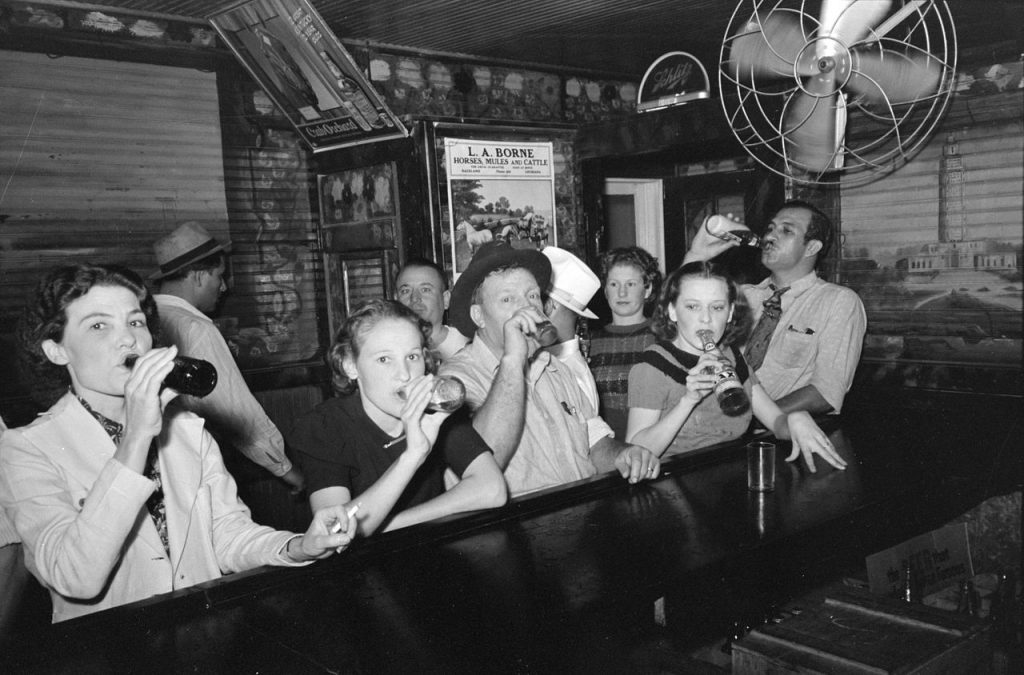The United States has had a complicated past with alcohol – from uncontrolled consumption during the Colonia Era through the Temperance Movement and Prohibition to the recent policy change to raise the drinking age to twenty-one, it is clear that Americans have never agreed about the most effective and ethical ways to legislate drinking laws.

Drinking at beer the bar, Raceland, Louisiana, 1938 (Public Domain)
Since 1986, the drinking age has remained at twenty-one, and the United States has faced the glaring consequences of its drinking habits. The twenty-first century has seen soaring rates of underage drinking and binge drinking, and both realities have had serious consequences. Underage drinking has promoted a widespread disregard for the law and the use of forms of false identification, while the culture of binge drinking is tied to high rates of unintended injuries, fatalities and sexual assault. While the opposing sides of the debate could spend decades discussing the effectiveness and ethicality of the current MDLA of twenty-one years old, the reality of the drinking culture speaks for itself. The time to change the drinking age law is now, for it perpetuates an unethical culture of underage drinking and binge drinking – and this culture is harming individuals and society as a whole.
This site aims to inform readers of the United States’ complex history of its drinking law and drinking culture, explain the ethical implications of the law’s consequences, and provide a viable solution that would improve the drinking culture.

Youths binge drinking, circa 1965 (Creative Commons)